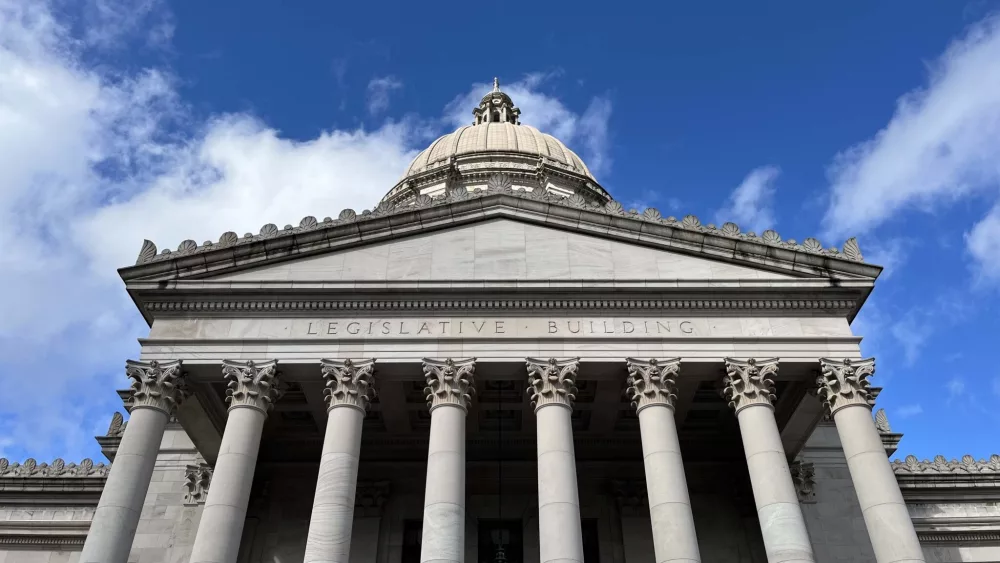WASHINGTON, D.C. – A bipartisan piece of legislation that could have big impacts on the nation’s forest land continues to move quickly through Congress, pushing through a Senate committee last month.
The Fix Our Forests Act was introduced in the U.S. Senate in April and co-sponsored by Sen. Tim Sheehy, along with Senators from California, Utah and Colorado.
The legislation seeks to promote prescribed burns, expand the state-federal Good Neighbor Authority program, increase collaboration among fire agencies and improve reforestation efforts after fires. It also makes some rule changes that could impact how areas designated as high fire danger are managed and how projects in those areas proceed.
“Better stewardship of our forests is not a partisan issue; it’s an imperative to securing a stronger economy, healthier forests, and safer communities,” Sheehy said in a press release. “I’m proud to see the bipartisan Fix Our Forests Act move forward in the legislative process, and I’ll continue fighting alongside my colleagues to enact commonsense reforms that ensure proper forest management, unleash the resource economy, and protect American communities from the threat of wildfire.”
The governors of those four states, including Gov. Greg Gianforte, signed on to a letter in support of the legislation in late October. The bill has already worked its way through the U.S. House, though doesn’t include new appropriated funds.
The legislation has received some support from environmental and outdoor advocacy groups, with the Theodore Roosevelt Conservation Partnership calling it a “comprehensive” approach to tackling forest health and wildfire issues. The Nature Conservancy and the National Audubon Society is also in support of the legislation.
But there has also been some concern with it, namely around how it could change the process of forest projects, especially those in a declared “emergency fireshed management” area. That’s a Biden-era designation which essentially prohibits projects from exploring alternatives on forestry projects — the only options are what’s called an “action” or “no action.” It essentially shortens the review period for projects within that designation.
Forestry actions falling within that designation are usually small in scope, but the federal legislation would push that number to include projects as large as 10,000 acres.
Even with the renewed interest in prescribed burns and other forestry projects to help with forest health, there’s still a lack of action, said Riva Duncan, the vice president of Grassroots Wildland Firefighters, an advocacy group made up of former firefighters.
According to Forest Service data, hazardous fuels reduction work across their lands was down 38% in 2025 when compared with the same period during the previous four calendar years.
Federal cuts and Department of Government Efficiency actions caused chaos last winter and some mitigation projects never happened or were delayed. Between the cuts and needs for firefighters around the country, the work just isn’t getting done, she said.
And while DOGE actions mostly spared firefighters, supporting positions around fire mitigation work were not.
“There’s a huge network of specialists and biologists and things behind the scenes that do the environmental work to allow these fuels projects to continue,” Duncan said. “And so they were hit really hard by (DOGE cuts) and by the deferred resignations and things like that. A lot of issues are exacerbated by this administration, who has been very open about not supporting a Federal workforce.”
Prescribed burns can help mitigate risk by removing fuel that otherwise might add to the intensity of a fire. During the last 100 years the Forest Service has consistently embraced suppression as its main method of fire defense.
Land management policies “vilifying” fire have led to overgrowth and climate change continues to impact forests, Duncan said, adding suppression has been a renewed focus this summer. U.S. Forest Service Chief Tom Schultz, who spent 14 years with the Montana Department of Natural Resources and Conservation, has said the nation’s forests are in trouble because they’re not being logged enough.
“Every year the Chief of the Forest Service puts out their fire season letter, and it made pretty clear that suppression was going to be the primary focus,” Duncan said. “And I think when you look at the chief and his background coming from the timber industry, there are a lot of people who have commercial timber lands, commercial timber interests, who don’t like fire, who still will not recognize the value it brings. All it does is hurt their bottom line, right?”
Duncan also pointed out not all logging is necessarily fuel mitigation work and added she’s not specifically against logging; however, saying logging alone will solve the issue is disingenuous.
“A lot of people who want us to log more, want more trees to come off national forest lands, will try to make that argument,” Duncan said. “Sometimes it is, sometimes it’s not. Often it’s not.”
Grassroots Wildland Firefighters did submit a comment on the Fix Our Forests bill and she said it’s an acknowledgment that more fuel work needs to be done.
“Fire is non-partisan. It doesn’t recognize boundaries or recognize if it’s private or federal land, if it’s commercial versus being managed for ecological reasons,” Duncan said. “And so we need a comprehensive solution with everybody at the table who has a stake, and everybody has a stake.”
This story first appeared on Daily Montanan.





